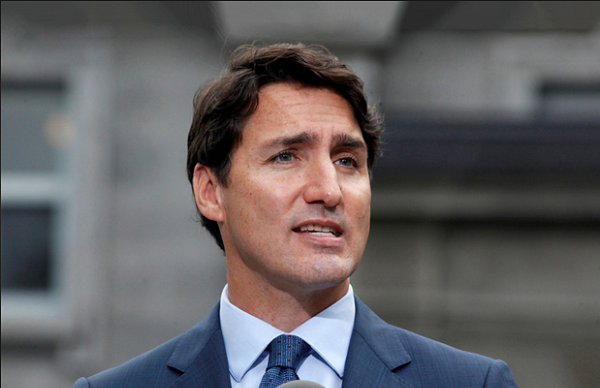Bank of Canada cuts interest rate a second time to 4.5 percent
The Bank of Canada cut interest rates by a quarter percentage point for a second consecutive meeting and signalled further easing ahead as inflation worries wane.
Policymakers led by Governor Tiff Macklem lowered the benchmark overnight rate to 4.5 per cent on Wednesday, as widely expected by markets and economists in a Bloomberg survey. Officials see below-potential growth continuing to cool inflation, and said they’re spending more time discussing economic headwinds.
“With the target in sight and more excess supply in the economy, the downside risks are taking on increased weight in our monetary policy deliberations,” Macklem said in prepared remarks.
Macklem reiterated that it’s “reasonable” to expect further interest rate cuts, and that the bank will be taking its decisions “one at a time,” pushing back on expectations that the bank is on a predetermined cutting path.
Officials say they’ve continued to make progress on bringing price pressures to heel, and that a return to the two per cent inflation target is “in sight.” The June consumer price index, which showed inflation decelerated to a 2.7 per cent yearly pace, also pointed to slowing underlying price pressures, the bank said.
Overall, officials seems more convinced that price pressures are under control, and are increasingly focused on preserving a soft landing for the economy. The dovish suite of communications suggest that governing council has shifted their attention to ensuring inflation does not substantially undershoot the two per cent target.
It’s a marked shift in the bank’s attitude toward inflation. A summary of deliberations from the officials’ June meeting showed policymakers had debated whether more disinflation proof was needed before easing. Now they’re more convinced they have enough evidence.
The balance of risks is changing too. Officials listed weaker-than-expected household spending as a main downside risk, pointing to upcoming mortgage renewals as a risk to consumption growth. In its statement, the bank said it’s seeing more “signs of slack” in the labour market, and said job-seekers are taking longer to find work.
In June, the Bank of Canada became the first Group of Seven central bank to cut interest rates. Since then, the European Central Bank has also started easing. Importantly, markets and economists are increasingly convinced the U.S. Federal Reserve will also start cutting.
In the accompanying monetary policy report, the bank kept its economic forecasts roughly the same — growth is expected to remain in excess supply over the forecast horizon. Inflation is expected to rise 2.6 per cent this year, steadily decelerating to reach two per cent by the end of 2025.
A sharp rise in housing prices is no longer listed as a main upside risk, and officials cut the contribution of housing to the economy in 2024.
In the accompanying sees growth reaccelerating to a 2.8 per cent annualized pace in the third quarter, driven partly by higher exports from the expanded Trans Mountain pipeline. The economy is expect to expand 1.2 per cent in 2024, revised down from 1.5 per cent previously.
The bank said wage growth, while elevated, is moderating as the labour market loosens. Corporate pricing behavior has “largely normalized”, and inflation expectations have come down.
In June, the final paragraph of the bank’s policy statement had focused on those concerns, but the July statement was largely rewritten to focus on “ongoing excess supply” and “opposing forces” on inflation — the bank sees shelter and services holding up progress.
There was no mention of the recent reacceleration of the 3-month moving average of the bank’s preferred core measures, which accelerated to 2.91 per cent in June. Instead, policymakers highlighted progress on the yearly change of median and trim CPI — which is expected to decelerate to 2.5 per cent, according to newly added projections.
Moving more swiftly would allow policymakers to get ahead of coming mortgage renewals, reducing the payment shock for homebuyers who signed on at rock-bottom rates during the pandemic. But cutting too fast has the potential to reignite cost pressures or the country’s supply-squeezed housing market.
Macklem and Senior Deputy Governor Carolyn Rogers will take questions from reporters at 10:30 a.m. Ottawa time.
This article was first reported by BNN Bloomberg













